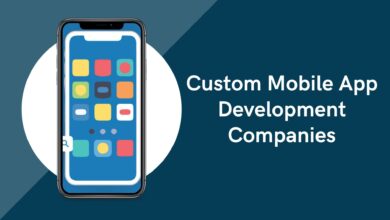Introduction to Data Labeling
Data labeling is a crucial step in the world of machine learning and artificial intelligence. It’s like putting labels on your files to make finding them easier, but for data sets that train algorithms. Whether you’re developing a self-driving car or refining voice recognition software, precise data labeling can significantly impact performance.
With the rapid growth of AI applications, businesses are increasingly turning to data labeling services to streamline their processes. But how do these services work? What techniques can you use? From manual methods that harness human expertise to advanced automated solutions powered by cutting-edge technology, there’s a wealth of options available.
In this post, we’ll dive into various data labeling techniques—highlighting their strengths and weaknesses—to help you choose the best approach for your project. Let’s explore what each technique entails and discover how they contribute to building smarter systems!
Manual Data Labeling Techniques
- Manual data labeling techniques are foundational to creating high-quality datasets. These methods rely heavily on human expertise, ensuring that every piece of data is accurately tagged.
- Human annotation involves trained professionals who meticulously review and label data. This approach guarantees precision, especially for complex tasks like sentiment analysis or medical image classification. However, it can be time-consuming and resource-intensive.
- Crowdsourcing offers an alternative by tapping into a vast pool of individuals online. Platforms allow businesses to distribute labeling tasks among many contributors. While this method can speed up the process, variations in quality may arise due to differing skill levels.
- Both techniques emphasize accuracy but also highlight the balance between efficiency and cost-effectiveness when selecting manual options for specific projects. The choice often hinges on project requirements and budget constraints.
Human Annotation
Human annotation remains one of the most reliable methods for data labeling. It involves skilled annotators manually reviewing and tagging datasets. This approach ensures a high level of accuracy and context understanding.
Annotators can grasp nuances that machines often overlook. For instance, they can differentiate between similar sentiments or identify sarcasm in text—tasks that automated systems sometimes struggle with.
However, human annotation isn’t without its challenges. It requires substantial time and resources to train annotators adequately. The potential for human error also exists; mislabeling can lead to significant issues down the line.
Despite these drawbacks, the quality assurance provided by experienced annotators is invaluable for many projects. Organizations aiming for precise results often rely on this technique as a foundational step in their data preparation processes.
Crowdsourcing
Crowdsourcing has emerged as an innovative approach to data labeling. By harnessing the collective intelligence of a diverse group, it allows businesses to speed up the annotation process significantly.
This technique invites contributors from around the globe to participate in labeling tasks. It creates a vast pool of talent and perspectives that can enhance accuracy and quality in data sets. The diversity of annotators often leads to richer insights and more nuanced labels.
Platforms dedicated to crowdsourcing offer structured environments where tasks can be gamified or incentivized. This not only motivates participation but also ensures that high standards are maintained throughout the process.
However, managing a crowd requires careful oversight. Quality control mechanisms must be implemented to ensure consistency and reliability across contributions, safeguarding against potential errors inherent in such open systems.
Semi-Automated Data Labeling Techniques
- Semi-automated data labeling services techniques bridge the gap between human intelligence and machine efficiency. They enhance productivity while maintaining a level of accuracy that fully automated methods might struggle to achieve.
- Rule-based systems are one approach, using predefined criteria to assign labels. This method is effective for structured data but can falter with complex datasets where nuance matters.
- Active learning takes a different route by allowing models to query humans for labeling on uncertain cases. This iterative process helps refine the model’s understanding over time, making it smarter with each cycle.
- Both strategies offer flexibility and scalability, catering to various project needs without sacrificing quality. By integrating these semi-automated solutions, teams can optimize their workflows while still leveraging human insight when necessary.
Rule-Based Systems
Rule-based systems are a semi-automated data labeling technique that relies on predefined rules to classify and annotate data. These rules can be tailored based on specific project requirements, making them highly adaptable.
The process involves creating a set of logical conditions or criteria that the system uses to evaluate input data. For instance, if an image contains certain features—like color or shape—it can automatically assign labels based on these attributes.
While rule-based systems offer consistency and speed, they do have limitations. They require careful design and maintenance as changes in the underlying data may render existing rules ineffective or outdated.
This approach works best for structured datasets where clear guidelines exist. When implemented correctly, it streamlines the labeling process while ensuring accuracy across large volumes of information.
Active Learning
Active learning is a powerful technique that enhances the data labeling process. It involves selecting the most informative data points for human annotators to label, focusing efforts where they can make the biggest impact.
In this approach, algorithms identify uncertain predictions. These are the instances where models struggle, often due to lack of sufficient training data. By prioritizing these cases, active learning improves model performance efficiently.
This method also reduces labeling costs and time. Instead of annotating entire datasets blindly, teams concentrate on pivotal examples that drive accuracy upwards.
Moreover, active learning fosters continuous improvement in machine learning models. As more labeled data becomes available through this targeted approach, models evolve and refine their predictions substantially over time.
Automated Data Labeling Techniques
Automated data labeling techniques are transforming the way organizations handle large datasets. These methods leverage advanced technologies to streamline the annotation process, saving time and resources.
Machine learning algorithms play a crucial role in this shift. They can learn from existing labeled data to predict labels for new instances. This self-improving capability enhances accuracy over time, making it easier to manage vast amounts of information efficiently.
Computer vision technology is another game-changer. It enables machines to interpret visual data by recognizing patterns and features automatically. This technique is particularly useful in industries like healthcare and autonomous driving, where rapid analysis of images is vital.
By integrating these automated solutions, businesses can achieve scalability while maintaining quality in their datasets. The efficiency gained through automation allows teams to focus on higher-level tasks rather than getting bogged down with manual labeling efforts.
Machine Learning Algorithms
Machine learning algorithms have transformed the data labeling landscape. They automate the process, making it faster and often more accurate.
These algorithms analyze vast datasets to identify patterns and categorize information. By training on labeled examples, they learn to predict labels for new, unseen data. This approach significantly reduces manual effort.
Supervised learning is particularly popular in this context. It relies on a well-labeled dataset for guidance during training. Once trained, these models can handle large volumes of data with ease.
However, choosing the right algorithm is crucial. Different problems require different approaches—whether it’s decision trees or neural networks.
Scalability is another benefit of using machine learning for labeling tasks. As your dataset grows, these algorithms adapt without compromising performance or quality.
Computer Vision Technology
Computer vision technology revolutionizes data labeling by automating the process. It leverages algorithms to interpret and analyze visual information from the world around us. This capability allows systems to identify, classify, and label objects in images or videos.
Using deep learning models, computer vision can recognize patterns with remarkable accuracy. For instance, it can distinguish between various items in a cluttered scene or detect anomalies that may be missed by human eyes.
The efficiency of computer vision significantly reduces time spent on manual labeling tasks. By processing vast amounts of visual data quickly, it enables businesses to scale their operations without compromising quality.
Moreover, this technology continues to evolve rapidly. As advancements occur, we can expect even more sophisticated tools that enhance precision and reliability in data labeling services across industries.
Pros and Cons of Different Data Labeling Techniques
Data labeling techniques each come with their own set of advantages and challenges. Manual methods, like human annotation, offer high accuracy but can be time-consuming and costly. The need for skilled annotators can further complicate the process.
On the other hand, crowdsourcing allows for faster data collection at a lower price point. However, quality control becomes crucial, as varying skill levels among contributors can lead to inconsistent results.
Semi-automated approaches strike a balance by leveraging rule-based systems that apply predefined criteria. While they enhance efficiency, these systems may struggle with complex datasets where nuanced understanding is necessary.
Automated solutions utilizing machine learning algorithms promise speed and scalability. Yet, they require substantial initial training data and might not handle edge cases well. Each technique has its place; selecting one depends on project needs and resource availability.
Choosing the Right Data Labeling Technique for Your Project
Choosing the right data labeling company technique for your project requires careful consideration of several factors. First, assess the volume and complexity of the data you need to label. For smaller datasets or highly specialized tasks, human annotation or crowdsourcing might be more effective despite being time-consuming.
If you’re dealing with larger datasets, semi-automated methods like active learning can balance efficiency and accuracy. This approach allows you to combine human expertise with machine capabilities, ensuring high-quality labels while saving time.
For projects that demand speed and scalability, automated solutions using machine learning algorithms or computer vision technology may be ideal. However, keep in mind that these approaches often require a solid initial dataset to train on effectively.
Aligning your choice with project goals and resource availability will lead you toward an optimal solution. Prioritize quality over quantity when it comes to data labeling services; after all, accurate labeled data is crucial for creating reliable models in any AI application.



